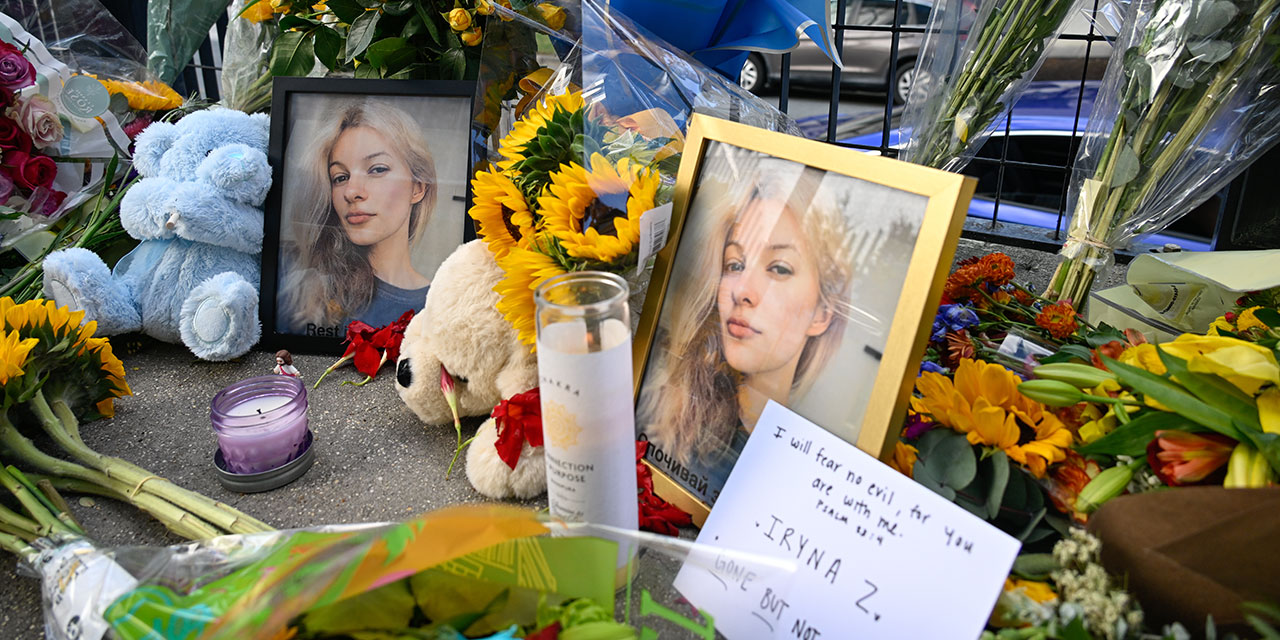
Late last month, Iryna Zarutska, a Ukrainian refugee, was fatally stabbed on a train in Charlotte, North Carolina. Though it has taken weeks for details to emerge, we now know that the alleged killer, Decarlos Brown, Jr., had an untreated serious mental illness. We learned this through his family’s testimony to reporters, which, because of health-privacy laws, is the standard way Americans learn of links between mental-health-system failures and violence.
Mentally ill people commit various kinds of violence, some of which require organization and planning. But mental illness is especially associated with crimes against relatives and total strangers, as Iryna Zarutska was to Decarlos Brown, Jr.
Charlotte appears to be a case where mental illness directly caused murder. While mental illness sometimes plays an indirect role in such crimes—by destabilizing someone’s life and putting him in circumstances, such as street homelessness, where violence is more likely—in other cases it inspires a person to act violently in response to a delusion. In this case, according to his sister, whom he had previously assaulted, Brown claimed that Zarutska was reading his mind.
The link between serious mental illness and violence is clear to researchers and the public. Advocates reject it, however. They argue that perpetuating myths about the connection between mental illness and violence causes stigma, which in turn explains why mental illness often goes untreated.
That’s doubly misleading. First, the mentally ill fail to seek treatment for many reasons other than stigma. Second, to the extent stigma is a problem, it’s caused by truth, not fiction. No one who viewed the video of the stabbing that Charlotte city government tried to repress will believe that Iryna Zarutska died because of society’s bigotry towards the neurodivergent.
Debates about the link between mental illness and violence inevitably raise the issue of institutionalization. In my years studying America’s crisis of untreated serious mental illness, I have become convinced of two things: (1) our public mental-health system should be mainly community-oriented, and (2) the institutionalized population is too small.
For their benefit and that of their families and the broader public, a cohort of seriously mentally ill people should be committed to facilities long-term. This group is currently mostly distributed among jails and prisons, the streets and shelters, family living arrangements, and social housing programs. It certainly numbers in the tens of thousands, likely the low hundreds of thousands. With more people placed in “long-term institutional settings for humane treatment through the appropriate use of civil commitment,” as the Trump administration’s July executive order on crime and disorder puts it, we’d see fewer spectacular tragedies caused by mental illness—and less stigma as a result.
The chief barrier is a shortage of psychiatric beds—in particular, beds that can accommodate long-term stays. Increasing the bed stock will require new legislation to authorize Medicaid to pay for long-term psychiatric treatment. While waiting for congressional action, states, following the examples of New York, Oklahoma, and Texas, can act independently to expand beds. North Carolina has one of the lowest per capita psychiatric-bed rates in the nation.
Our community mental health system also needs reform. But like any public program, success depends just as much on who the program serves as on the program’s design. America’s community mental-health system spends too much time dealing with basically healthy people (the “worried well”), on the one hand, and excessively sick and disturbed people, on the other. Too many community programs fail because they’re forced to handle clients that need a higher level of care.
Decarlos Brown Jr. was homeless. Would a housing program have prevented him from stabbing a total stranger on public transit? Who knows. Given his past record of crime and noncompliance with treatment, and since housing is not the same thing as treatment, Brown would almost certainly have been a burden to his neighbors and program staff. Housing hides behavioral health crises; it does not solve them.
Zarutska’s murder reminded me of Bano Rashid, a Kurd whose family fled Iraq for Norway and what they expected would be a safer Scandinavian harbor. Instead, as Åsne Seierstad’s book One of Us chronicles, Rashid became of one of the 77 victims of the 2011 Norway massacre.
When they accept immigrants, and especially refugees from a warzone, governments make a promise about opportunity, care, and above all, safety. Western countries now host historically high numbers of new arrivals. America promised Iryna Zarutska a better life. Our mental-health and public-safety systems failed her. You might even say they betrayed her.
Photo by Peter Zay/Anadolu via Getty Images
City Journal is a publication of the Manhattan Institute for Policy Research (MI), a leading free-market think tank. Are you interested in supporting the magazine? As a 501(c)(3) nonprofit, donations in support of MI and City Journal are fully tax-deductible as provided by law (EIN #13-2912529).
















